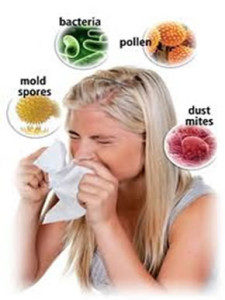
Allergies and Clean Air
Allergic reactions come in many forms. However, what remains constant is the medium through which allergies are transferred – air. This is why clean air at home, at the workplace, and even outdoors is so important. Granted, controlling the air we breathe outdoors is quite challenging; impossible even. However, it is possible to control indoor air at home and at work. This can be achieved through services such as air duct cleaning which we at Air Duct Cleaning Ventura offer.
The link between allergies and air
The link between allergies and clean air is as mentioned above. Allergens are transported through the air. In other words, air is the facilitator of allergies. The type of air you have within your environment, therefore, determines your risk of allergies at any given time. If you’re breathing unclean air, you are likely to suffer an allergic reaction. And on the other hand, if you are breathing clean air, chances are that you will not suffer any allergies whatsoever.
Lacking clean air can affect your allergies
 People suffering from allergic reactions are advised by their doctors to watch the environment they are in. If they get close to allergens which they are averse to, the air carries those allergens around and they end up inhaling them, causing allergic episodes. As such, one does not have to get into physical contact with allergens to suffer an allergic reaction. The air fills in the gaps, so to speak.
People suffering from allergic reactions are advised by their doctors to watch the environment they are in. If they get close to allergens which they are averse to, the air carries those allergens around and they end up inhaling them, causing allergic episodes. As such, one does not have to get into physical contact with allergens to suffer an allergic reaction. The air fills in the gaps, so to speak.
The upside here is that anyone suffering from allergies now knows what they need to do, or need not do, in order to keep their allergies at bay. Simply ensure to create an environment full of clean air all around you where possible.
Different types of allergic reactions you can suffer due to unclean air
There are different types of allergies one can suffer as a result of being in an environment which has unclean air. The most common are:
Eyes
The eyes can get irritated by allergens quite easily. They are quite an open target considering that one usually has their eyes open at most times. An allergic reaction of this type is usually followed by the eyes getting teary. The eyes can also get inflamed and redden. When extreme, one may feel itchy around the eyes.
Nose and sinuses
This is the most common type of allergic reaction. It’s especially susceptible to pollen. Once the allergens have been inhaled, the sensitive membranes of the sinuses, usually located around the nasal area, get inflamed. This is characterized by the sinuses swelling up and blocking the nasal cavities. This can result in difficulties breathing, irritation, and general discomfort around the nose area.
Respiratory system
Another common form of allergic reaction is that of the respiratory system. Here, lungs and the trachea are most affected. As the allergens travel down the nose or mouth, they inflame and irritate the sensitive cell membranes around these reparatory organs. Mucus is then produced in an attempt to protect the breathing system from the allergens. What then follows is marginal blockage of the breathing tracts causing difficulty breathing, e.g. wheezing.
Skin
Another possible allergic reaction is that of the skin. Here the skin gets inflamed upon getting into contact with allergens. The skin may redden, itch, swell, and even get a rash.
Allergies contained in unclean air
There are lots of allergens present in unclean air. The concentration of each will vary with the environment one is in. Some environments have higher concentrations of some allergens than others. For example, rural farmlands are more likely have more pollen allergens than urban areas.
Here is a list of the most common allergens:
- Pollen
- Dust
- Pet hair
- Cloth fibers
- Plant fibers
How to avert allergic reactions through clean air
If you are predisposed to allergies, you can avert allergic reactions such as those described here by keeping the air around you clean. This is more practical indoors. Some of the actions you can take include:
- Opening your windows to let fresh air in.
- Keeping your floors, furniture, curtains and bedding clean.
- Cleaning the ventilation spaces around your walls and roof.
- Having the air ducts in your HVAC systems cleaned professionally.

0